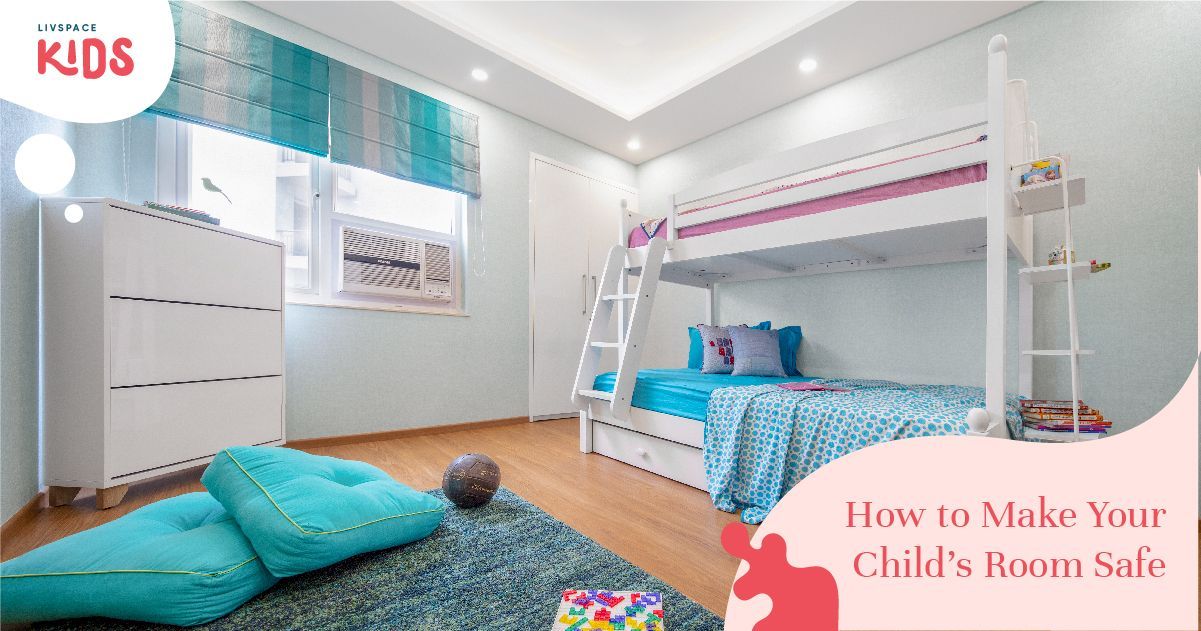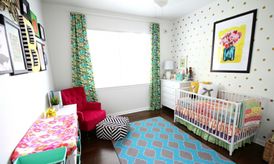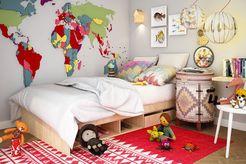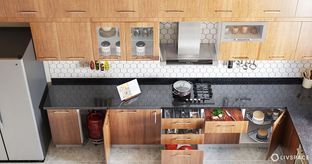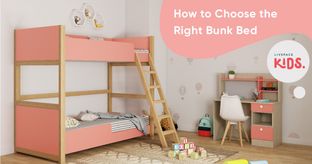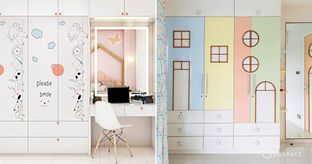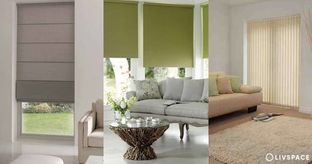When designing or revamping a kid’s room, safety is one of the topmost priorities, as is ergonomic design. Since it’s a space for frolic and free play, it just won’t do to have sharp corners, slippery flooring or uncomfortable furniture.
It’s no easy task to ensure your kid’s bedroom meets unwritten safety ergonomic standards. However, these tips on childproofing should put you on the right track:
Childproofing a Room Tip #1: Block off Sharp Corners
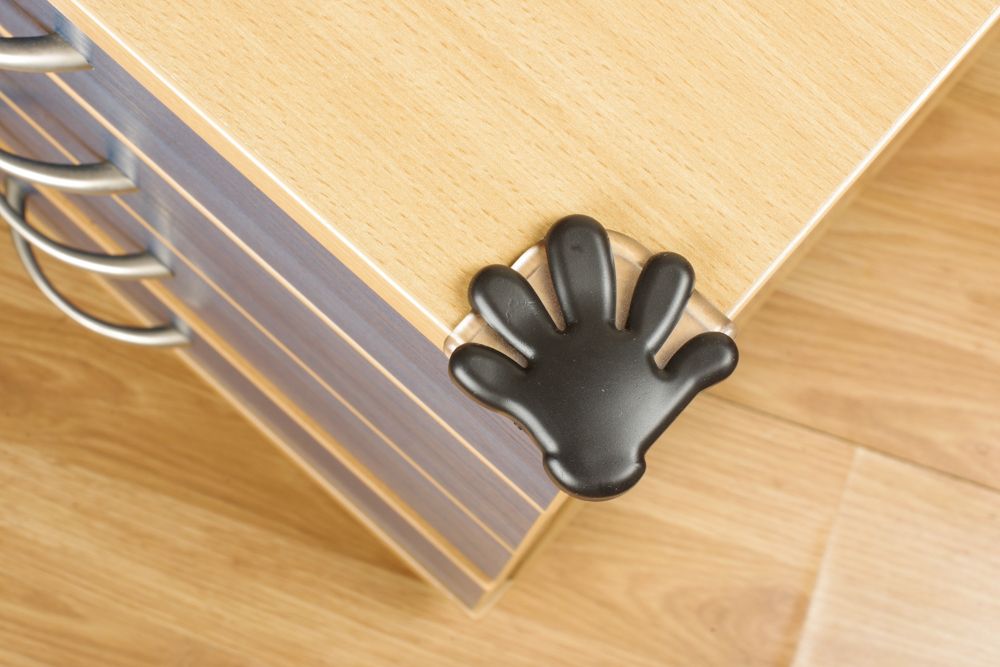
This tip is common knowledge but something that’s easily forgotten in the frenzy to bag stylish furniture. Sharp corners are dangerous when young children are around. This is because one bump or fall could leave scars or cause serious damage. While shopping for kids’ furniture, ensure that the corners are rounded and smooth enough to cause nothing more than a bump if run into. If you’re childproofing an existing room, tack corner guards on sharp edges around your child’s height level.
Childproofing a Room Tip #2: Get Ergonomic Chairs
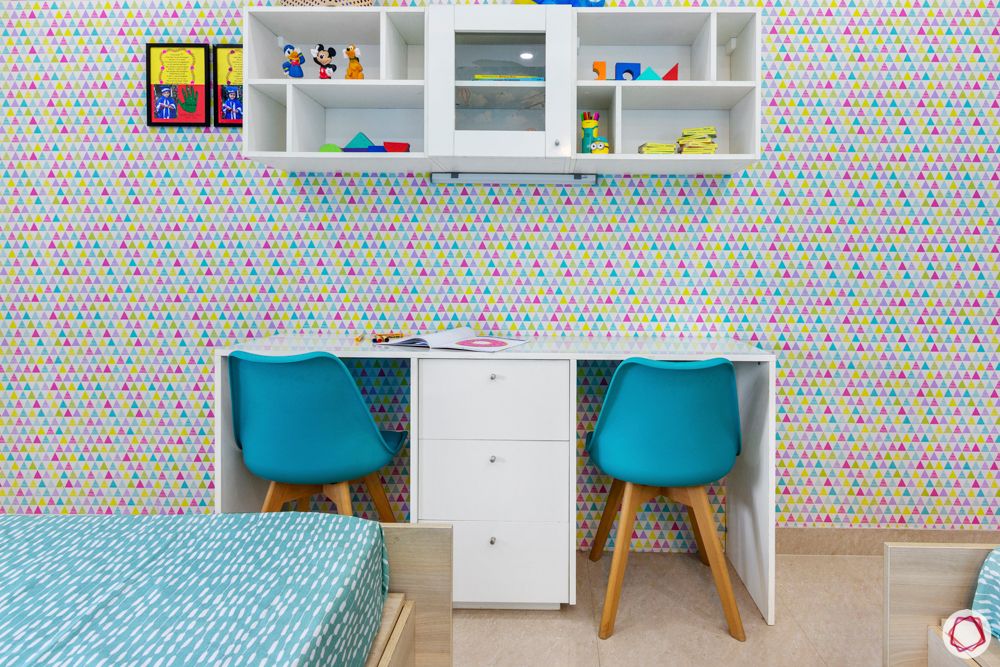
So many children in school and at home use chairs that are just not right for their height and weight. This causes a lot of health problems in the long run, including hunched backs and muscle pain. To offset this in advance, pick out flexible or swivel chairs for your child’s study table. These don’t have rigid backs as traditional chairs do. Instead, they incline with the child’s movement and move with them to prevent uncomfortable movements and unhealthy sitting.

Childproofing a Room Tip #3: Use Easy-Care Material
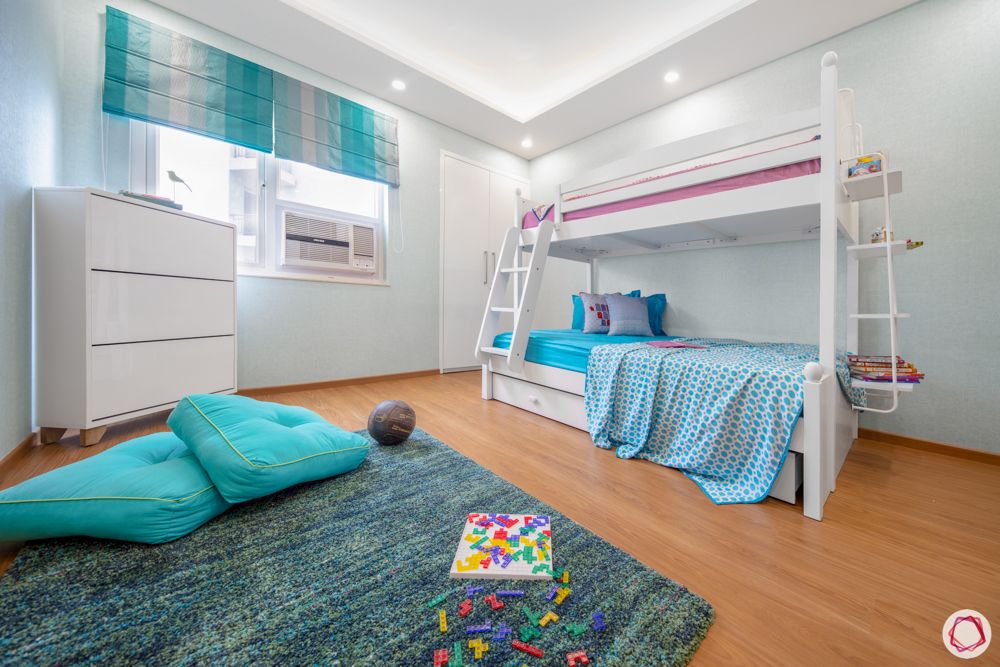
An untidy room is a parent’s worst nightmare because it’s also a breeding ground for germs and bacteria. If you’re worried about the otherwise normal spills and stains in a kid’s room, consider opting for antibacterial laminates and similar easy-to-maintain materials in your furniture. These are easy to wipe down and prevent the build-up of germs on frequently used surfaces. The walls can be painted in emulsion paints that can be rid of marker drawings and squiggles.
Childproofing a Room Tip #4: Use Door Guards
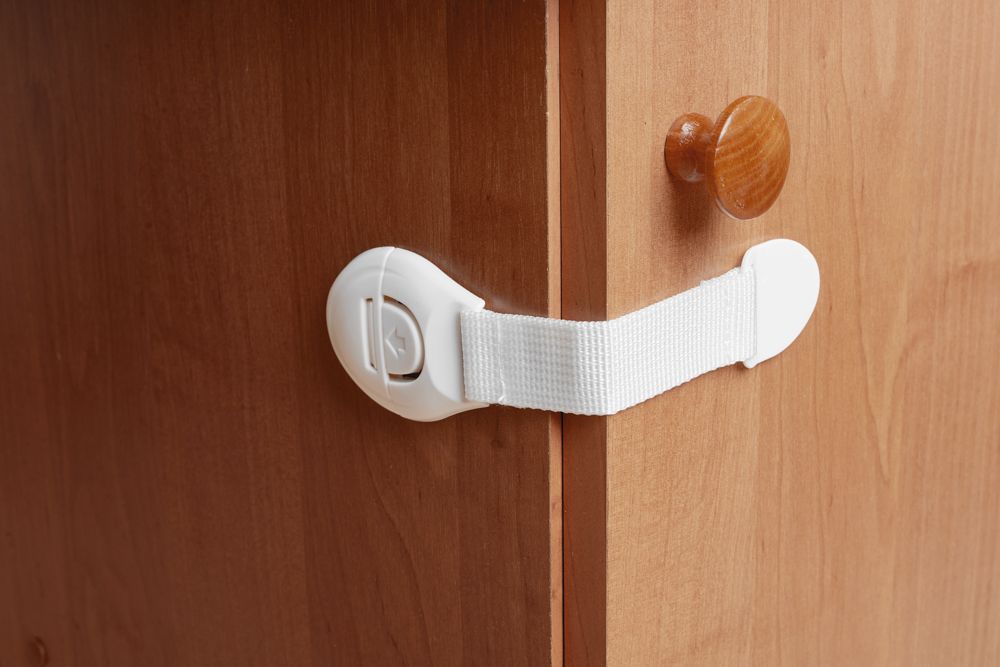
It’s an altogether common tale to hear of children jamming fingers in hinged doors, but you can prevent it from happening in your home with childproofing door safety guards. These prevent open doors from slamming when unstuck from the wall. Door handle covers prevent your child from opening cupboards and drawers with hazardous agents like cleaning liquid, while safety latches keep cabinet doors closed to prevent fingers from getting stuck.
Childproofing a Room Tip #5: Add Outlet Covers

Have a power outlet or two in the kid’s room that you don’t want to get removed? Use childproofing outlet covers to conceal them. These automatically close over open sockets when not in use. So your child won’t accidentally turn the switch on or put a finger in. As your child grows older and begins needing power outlets for charging phones and electronics, you can easily take off the cover for use or discard it entirely.
The key to designing a space that is conducive to play and growth is to ensure a safe environment. Moreover, it needs to be ergonomically designed! To find out the essentials for your child’s room, check this out: What Furniture Does Your Child Need?
Send in your comments and suggestions.

